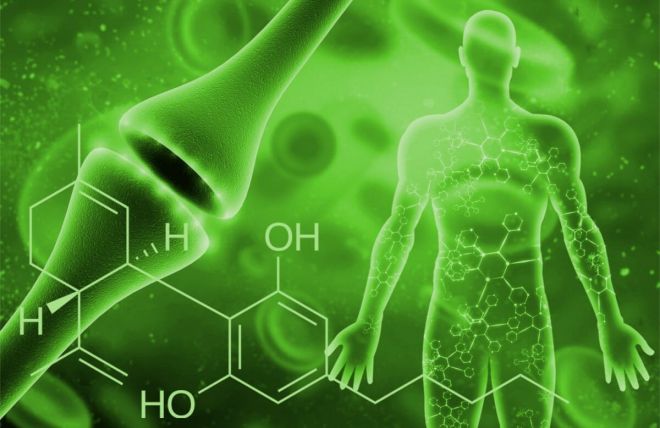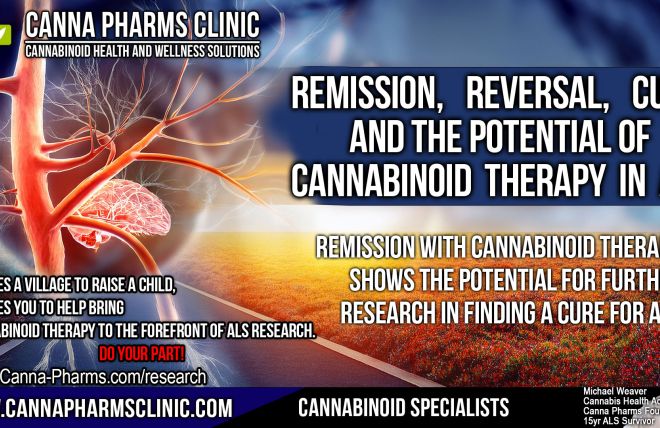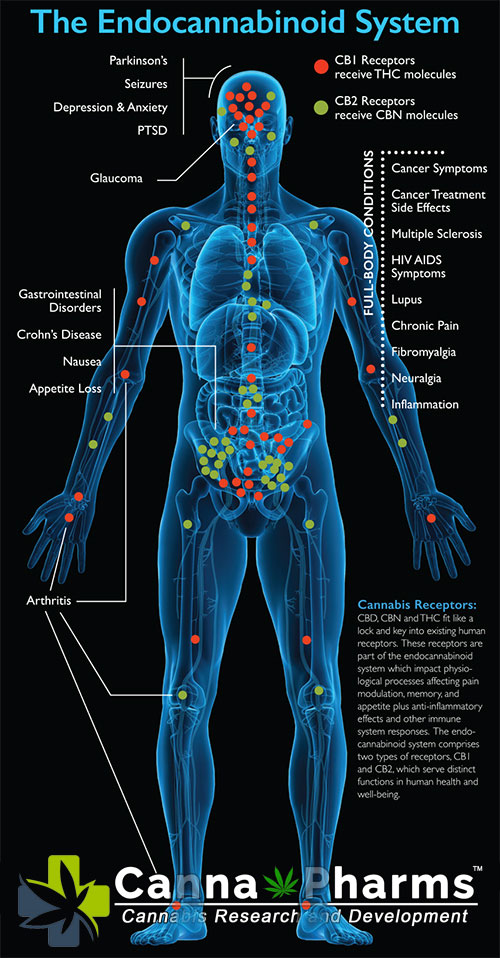Abstract: Amyotrophic Lateral Sclerosis (ALS) is a devastating neurodegenerative disease characterized by progressive motor neuron death, ultimately leading to paralysis and death. While current treatments offer limited symptomatic relief and modest lifespan extension, novel therapeutic approaches are urgently needed. This paper explores the theoretical possibility that long-term survival in ALS may be achievable through cannabinoid therapy, specifically by balancing a dysregulated endocannabinoid system (ECS). We examine the potential mechanisms by which cannabinoids can modulate inflammation, excitotoxicity, oxidative stress, and protein aggregation, all pathological hallmarks of ALS, and discuss the challenges and future directions for research in this area. It is crucial to acknowledge that this paper presents a theoretical exploration and robust clinical trials are necessary to validate these hypotheses.
Introduction:
Amyotrophic Lateral Sclerosis (ALS), also known as Lou Gehrig's disease, is a progressive and fatal neurodegenerative disorder affecting motor neurons in the brain and spinal cord. This leads to muscle weakness, atrophy, paralysis, and ultimately respiratory failure. The median survival time is typically 3-5 years from diagnosis, highlighting the urgent need for effective therapies. While the exact etiology of ALS remains complex and multifaceted, several key pathological hallmarks contribute to disease progression, including chronic inflammation, excitotoxicity, oxidative stress, protein aggregation, and mitochondrial dysfunction.
The endocannabinoid system (ECS) is a complex neuromodulatory system involved in maintaining homeostasis throughout the body, including the central nervous system. It comprises endogenous lipid mediators (endocannabinoids), their receptors (CB1 and CB2, among others), and the enzymes responsible for their synthesis and degradation. Mounting evidence suggests that the ECS is dysregulated in ALS, playing a complex and potentially dual role in disease progression. While the ECS may initially offer neuroprotective effects, chronic activation can lead to receptor desensitization and contribute to disease pathology.
This paper posits that balancing this dysregulated ECS through targeted cannabinoid therapy may offer a novel approach to mitigating the key pathological features of ALS, potentially leading to long-term survival.
The Dysregulated ECS in ALS:
Studies have demonstrated alterations in ECS components in ALS patients and animal models. Specifically, changes in endocannabinoid levels, receptor expression, and enzyme activity have been observed in the spinal cord, brain, and other tissues. The specific nature of these changes, however, appears to be complex and may vary depending on the stage of the disease.
CB1 Receptor: CB1 receptors are primarily found in the brain and influence motor function. Changes in CB1 receptor expression have been reported in ALS, with some studies showing decreased expression in motor neurons, potentially contributing to excitotoxicity.
CB2 Receptor: CB2 receptors are predominantly expressed on immune cells and are involved in regulating inflammation. Increased CB2 receptor expression has been observed in the CNS of ALS patients, suggesting an attempt to modulate the inflammatory response.
Endocannabinoid Levels: Changes in the levels of endocannabinoids like anandamide (AEA) and 2-arachidonoylglycerol (2-AG) have been reported in ALS. These changes may reflect compensatory mechanisms or contribute to the disease pathology.
Understanding the specific nature of ECS dysregulation in ALS is crucial for developing targeted cannabinoid therapies.
Potential Mechanisms of Action of Cannabinoids in ALS:
Cannabinoids, both endogenous and exogenous, interact with the ECS to produce a variety of effects. Their potential therapeutic benefits in ALS stem from their ability to influence several key pathological processes:
Anti-Inflammatory Effects: Chronic inflammation plays a significant role in ALS progression. CB2 receptor activation by cannabinoids can suppress the release of pro-inflammatory cytokines, reduce microglial activation, and promote a neuroprotective, anti-inflammatory environment. This can help mitigate the inflammatory cascade that contributes to motor neuron damage.
Neuroprotection and Excitotoxicity Reduction: Excessive glutamate signaling can lead to excitotoxicity, a major contributor to motor neuron death in ALS. Cannabinoids, particularly through CB1 receptor modulation, can reduce glutamate release and protect neurons from excitotoxic damage.
Antioxidant Effects: Oxidative stress is another critical player in ALS pathology. Some cannabinoids possess antioxidant properties, scavenging free radicals and protecting cells from oxidative damage. This can help reduce the cellular damage caused by reactive oxygen species.
Regulation of Protein Aggregation: Protein aggregation is a hallmark of many neurodegenerative diseases, including ALS. Dysfunction in protein degradation pathways can lead to the accumulation of misfolded proteins, further exacerbating neuronal damage. Some evidence suggests that cannabinoids may promote protein clearance and reduce protein aggregation, although the exact mechanisms are still under investigation.
Modulation of Mitochondrial Function: Mitochondrial dysfunction is implicated in ALS pathogenesis, leading to energy deficits and increased oxidative stress. Some studies suggest that cannabinoids can improve mitochondrial function and protect against mitochondrial damage, potentially improving cellular energy production and reducing oxidative stress.
Challenges and Future Directions:
While the theoretical potential of cannabinoid therapy in ALS is promising, significant challenges remain before it can be translated into clinical practice:
Specificity and Targeted Delivery: Cannabinoids can interact with multiple targets in the body, potentially leading to unwanted side effects. Developing selective cannabinoid agonists or antagonists, or utilizing targeted delivery systems to specifically deliver cannabinoids to the affected motor neurons, is crucial to maximize therapeutic benefits and minimize adverse effects.
Understanding the Complex ECS Dysregulation: A thorough understanding of the specific ECS alterations in ALS at different disease stages is essential for designing effective cannabinoid-based therapies. This includes identifying specific changes in endocannabinoid levels, receptor expression, and enzyme activity.
Clinical Trial Design: Well-designed, placebo-controlled clinical trials are necessary to evaluate the efficacy and safety of cannabinoid therapy in ALS patients. These trials should focus on assessing neurological function, quality of life, and survival rates.
Optimizing Cannabinoid Combinations: The "entourage effect," the synergistic interaction between different cannabinoids and terpenes, suggests that using combinations of cannabinoids may be more effective than using single compounds. Identifying optimal cannabinoid combinations for ALS is an important area for future research.
Long-Term Safety and Efficacy: Long-term studies are needed to assess the long-term safety and efficacy of cannabinoid therapy in ALS. This includes monitoring for potential side effects and assessing the impact on disease progression over extended periods.
Conclusion:
This paper presents a theoretical exploration of the potential of cannabinoid therapy for long-term survival in ALS by modulating the dysregulated ECS. By targeting inflammation, excitotoxicity, oxidative stress, and protein aggregation, cannabinoids may offer a novel approach to mitigating the key pathological features of ALS. However, it is crucial to emphasize that this remains a theoretical possibility. Rigorous research, including preclinical studies to elucidate specific mechanisms and well-designed clinical trials to evaluate efficacy and safety, is essential to translating this potential into a viable therapeutic strategy for ALS patients. Further research is necessary to fully understand the complex role of the ECS in ALS and to develop targeted cannabinoid-based therapies that can effectively address the unmet needs of individuals living with this devastating disease.
Disclaimer: This paper is for informational purposes only and does not constitute medical advice. Consult with a qualified healthcare professional before making any decisions related to your health or treatment.






